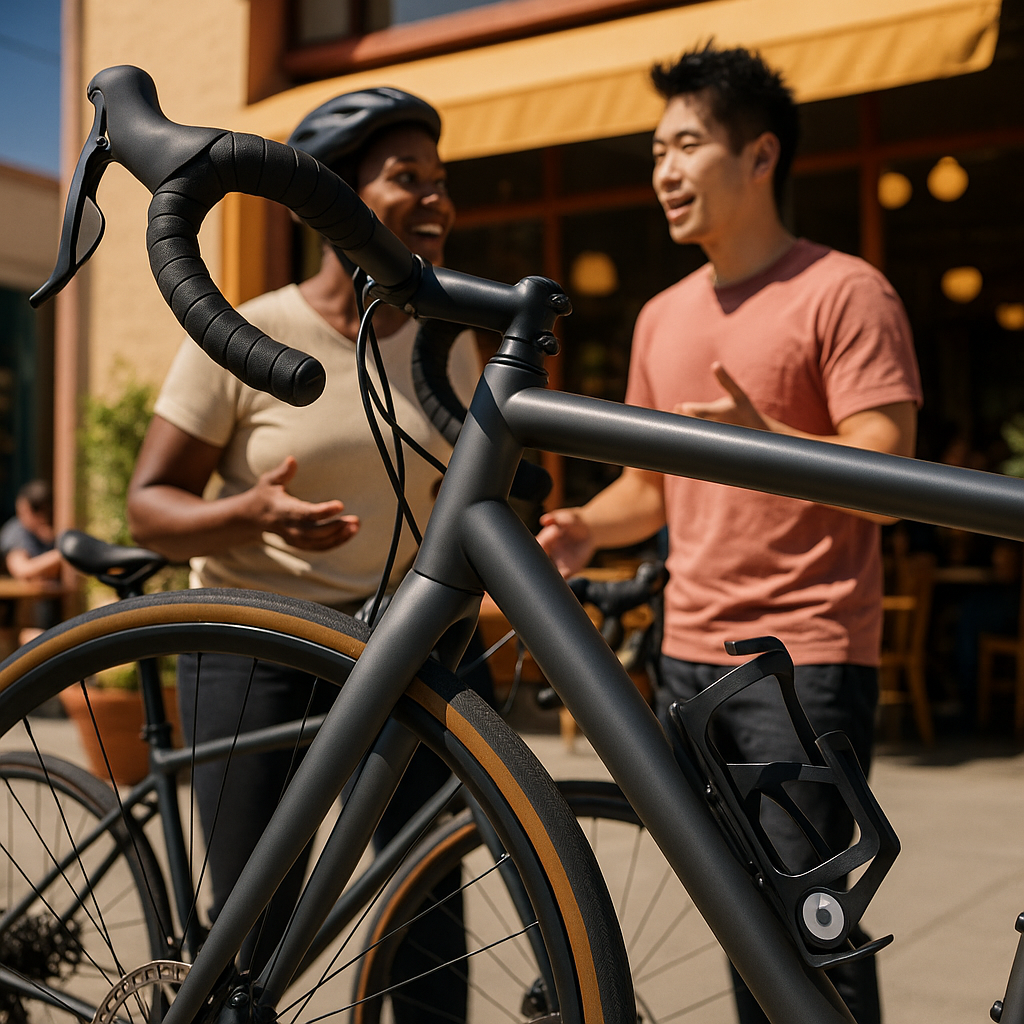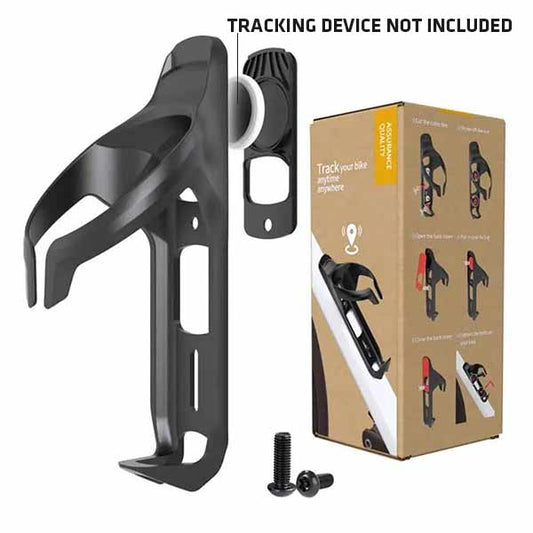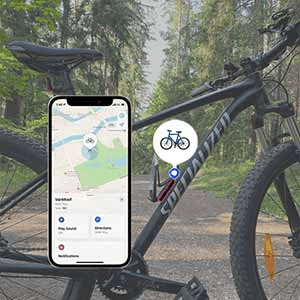Must-Have Tools Every Cyclist Should Carry on the Road
Whether you're a weekend warrior or a seasoned cyclist, being prepared for the unexpected is part of responsible riding. Breakdowns, flat tires, and mechanical issues don't wait for convenient moments—they happen miles from home, in bad weather, or when you're already running late. Having the right tools at your disposal transforms these potential ride-enders into minor inconveniences, keeping you safe, saving your adventures, and building confidence on every journey.
Essential cycling tools aren't just accessories; they're your lifeline when things go wrong. This comprehensive guide will walk you through exactly what you need to carry for safety, repairs, and emergencies—whether you're commuting through city streets or exploring remote backcountry roads. Beyond mechanical issues, modern cyclists should also consider security solutions like anti-theft gear for bikers that can protect your investment while you're away from your bike.
Why every cyclist needs an on-the-road toolkit
The freedom of cycling comes with responsibility. When your chain snaps 20 miles from home or you hit that hidden pothole causing an immediate flat, self-sufficiency isn't just convenient—it's necessary. Professional cyclists and experienced riders never leave home without a carefully curated toolkit, and neither should you.
Mechanical failures rarely announce themselves in advance. That slight clicking noise can become a complete drivetrain failure. The small puncture can lead to a blowout. Having the right tools means the difference between a quick roadside fix and the dreaded "walk of shame" or an expensive rideshare back home.
For enhanced peace of mind, cyclists are increasingly adopting bottle cage mounts with built-in AirTag compartments for bike tracking, like this highly-rated bike bottle holder with AirTag support. These innovative solutions add security without adding bulk to your essential toolkit.
Security and anti-theft tools
While mechanical failures are frustrating, bike theft can be devastating. Modern cycling toolkits now often include lightweight security options that help protect your bike while you're making a quick stop.
GPS trackers and hidden AirTag mounts provide valuable peace of mind without adding significant weight.
This bottle cage AirTag mount not only securely holds my water bottle but also does an excellent job concealing the AirTag. It's a fantastic enhancement for any bike, offering security without compromising performance or aesthetics.
The definitive list—must-have tools & equipment for every ride
Building your cycling toolkit isn't about carrying everything—it's about carrying the right things. Let's break down the essentials every cyclist should have, organized by purpose and priority.
Tire repair essentials
Flat tires are the most common mechanical issue cyclists face, making tire repair tools absolute must-haves for every rider.
- Spare tube - Always carry at least one tube that matches your wheel size, valve type (Presta or Schrader), and valve length. For extra insurance on longer rides, pack two.
- Tire levers - Look for durable plastic or composite levers that won't damage your rim. Metal levers should be avoided, especially with carbon wheels. A set of two or three levers is typically sufficient.
- Patch kit - Traditional glued patches offer the most reliable repair, though self-adhesive patches work well for temporary fixes. These kits are tiny but can save your ride when you've already used your spare tube.
-
Inflation device - You have two main options here:
- Mini pump - Reliable and reusable, though they require effort and time to reach proper pressure.
- CO2 inflator with cartridges - Provides rapid inflation with minimal effort, but each cartridge is single-use.
- Tire boot - For repairing larger tire cuts. Commercial options are available, but in a pinch, a folded dollar bill, energy bar wrapper, or piece of Tyvek can work.
Multi-tools & wrenches
A quality multi-tool is the cornerstone of any cycling toolkit. The best options balance functionality with portability.
- Allen keys - At minimum, you need 4mm, 5mm, and 6mm sizes to handle most bike bolts. Many modern bikes also require 2mm and 3mm for derailleur adjustments.
- Torx bits - Increasingly common on newer bikes, particularly T25 for disc brake rotors and some components.
- Screwdrivers - Both Phillips and flathead for adjusting derailleurs and other components.
- Chain tool - Essential for repairing a broken chain. Look for one that's compact but sturdy enough for real-world use.
- Spoke wrench - Helps true a wheel with minor damage or loose spokes that cause rubbing.
- Valve core tool - Allows you to remove stubborn valve cores when adding sealant or replacing cores.
The gold standard for cycling multi-tools includes all these features while remaining compact and lightweight. Look for tools with chainbreaker functions and quick-link storage compartments for maximum utility.
Emergency & safety gear
Being prepared goes beyond fixing your bicycle—it means ensuring your own safety as well.
- Compact first aid kit - Include basics like adhesive bandages, antiseptic wipes, pain relievers, and any personal medications.
- Emergency lights - Small, lightweight front and rear lights can be lifesavers if you're unexpectedly riding after dark.
- Identification - Carry ID, emergency contact information, and medical alert information if applicable.
- Payment method - A small amount of cash and a credit card can solve many problems when mechanical fixes aren't possible.
- Weather protection - A packable wind/rain jacket or emergency poncho takes minimal space but offers significant protection.
- Communication device - Your phone, properly protected in a waterproof case or bag.
Alongside proper locking techniques, tools like GPS trackers for cyclists are becoming increasingly important in the battle against bike theft. These small devices can be discretely mounted and provide peace of mind when you need to leave your bike unattended briefly.
Optional—but useful—bonuses
These items aren't strictly necessary for every ride but can be incredibly valuable in certain situations:
- Chain quick link - These tiny, lightweight links allow for field repairs of broken chains without specialized tools.
- Presta valve adapter - Enables filling Presta valves at standard air pumps found at gas stations.
- Spare derailleur hanger - Specific to your bike model, this can save your ride if your derailleur hanger gets bent or broken.
- Small multitool knife - Useful for everything from adjusting equipment to preparing food on longer rides.
- Spare electronic shifter battery - If you run electronic shifting, carrying a spare battery prevents the dreaded dead battery scenario.
- Mini roll of tape - Duct tape or electrical tape wrapped around a pencil stub takes minimal space but can temporarily fix countless issues.
- Zip ties - These versatile fasteners can secure loose components, attach improvised fenders, or even serve as emergency tire boots.
- Tubeless repair kit - For tubeless setups, carry tire plugs and insertion tools for quick trailside repairs.
How to pack and organize your bike tools
Having the right equipment is only half the battle—knowing how to pack it efficiently ensures you can access what you need when you need it.
Most cyclists use one of these carrying systems:
- Seat bags - The classic choice that attaches under your saddle, keeping tools secure and out of the way.
- Frame bags - Provide more storage capacity while keeping weight centered on the bike.
- Jersey pockets - Quick access but limited space and potential for items to bounce around.
- Top tube bags - Easy access while riding, ideal for items you need frequently.
- Storage bottle - Tools stored in a water bottle-shaped container that fits in your cage.
Organization is key to quick repairs.
Professional mechanics recommend using small, labeled pouches or ziplock bags to separate items by function: one for tire repair, another for tools, and a third for first aid and emergencies. Color-coding these pouches can speed up access in stressful situations.
UPGRADED DESIGN: Featuring a concealed compartment designed to accommodate an AirTag locator, this bottle holder with hidden tracking enables seamless tracking and positioning while maintaining a clean, aerodynamic profile on your bike.
Whatever system you choose, perform periodic checks of your kit. Replace used items, check CO2 cartridges for damage, and ensure batteries in lights and electronic devices are charged. Professional mechanics recommend doing this check monthly or before any significant ride.
Maintenance habits to prevent most on-the-road issues
The best roadside repair is the one you never have to make. Developing a pre-ride maintenance routine dramatically reduces your chances of mechanical failures.
- Tire inspection - Check pressure and examine tires for cuts, embedded objects, or excessive wear before each ride.
- Drivetrain check - Ensure your chain is clean and properly lubricated, with no stiff links.
- Quick bolt check - Verify that critical bolts on your stem, seatpost, and wheels are secure.
- Brake test - Confirm proper brake function and pad wear before heading out.
- Battery status - For electronic shifting systems or cycling computers, verify sufficient charge for your planned ride.
Many experienced cyclists keep a maintenance log or use a checklist app to track wear items and schedule regular deep-cleaning sessions. This systematic approach helps identify potential issues before they strand you miles from home.
Beyond mechanical preparation, taking precautionary security measures can prevent theft-related headaches. Simple habits like documenting your bike's serial number and learning proper locking techniques complement physical security devices. For comprehensive guidance, check out these essential tips to prevent bike theft.
Conclusion
Being prepared isn't about pessimism—it's about freedom. The confidence that comes from knowing you can handle common mechanical issues transforms every ride, allowing you to explore further and worry less about what might go wrong.
Your personal toolkit will evolve with your riding style, local terrain, and technological changes. Start with the essentials outlined here, then adapt based on your experiences. Consider upgrading to space-saving innovations like compact multi-tools or integrated storage solutions like AirTag mounts that add security without compromising performance.
Remember that the best cyclists aren't just the fastest or strongest—they're the ones who can adapt and overcome challenges on the road. With the right preparation, tools, and knowledge, you'll be ready for whatever your cycling adventures bring your way.
Frequently asked questions
What is the single most important tool to carry on a bike ride?
A multi-tool with essential Allen keys, plus a way to fix a flat tire (tube/levers/CO2 or pump) are the absolute basics every cyclist should carry, as these address the most common roadside issues.
Are CO2 inflators better than mini pumps for road repairs?
CO2 is fast but single-use; mini pumps are slower but unlimited—carry both for best preparedness. CO2 works well for quick repairs during events, while mini pumps provide reliability for longer adventures.
How do I choose the right size spare tube?
Match tire diameter/width and valve type/length; check your current tires/rims before buying. Look for the numbers printed on your tire sidewall (like 700×25c) and ensure your spare tube matches these specifications.
Why should I carry a quick link?
Quick links enable fast, tool-free repairs for broken chains; they're easy to store and a true ride-saver. They weigh almost nothing, take up minimal space, and can transform a ride-ending mechanical into a five-minute repair.
How can I secure my bike and tools against theft on rides?
Use quality locks, consider GPS/AirTag tracking devices, and don't leave accessories unattended. Register your bike's serial number, take photos for identification, and always lock to immovable objects when making stops during your ride.




